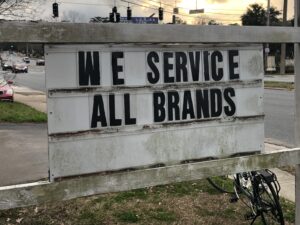
The U.S. is experiencing yet another shortage. But the item falls short of the typical list of sanitary items — toilet paper, hand sanitizer, masks or cleaning supplies. This item highlights how the COVID-19 virus has struck a specific aspect of public life: transportation. There are millions of Americans who rely heavily on public transportation as a commute to work, school, or any other destination they desire.
With the inevitable risk of COVID looming over entry of trains and buses, the search for alternatives was swift and mighty. In a matter of months, America has resorted back to an older, two-wheel mode of transportation: bikes.
Bicycles are the logical alternatives. Bike riders do not run the same risks of infection that public bus or train commuters do. Public transportation that is designed to transport as many people as possible, poses a threat to current COVID-19 social distancing protocol. As cases have continued to soar past 20 million, a proactive solution to curb infection is being enacted.
Bicycle sales are on the rise and bike shops are experiencing a crippling bike shortage. In May of 2020, New York Times writer Christina Goldbaum detailed a skyrocketing increase in bike sales and bike shortages, listing major cities as the main casualty. Now in January of 2021, bike shops located in metropolitan areas with public transportation are still reaping the consequences of the pandemic. The capital of Florida is no exception.
The full service bike shops in Tallahasse are enduring the shortage additionally. Bike shop employees have mixed feelings about the shortage. While employees from multiple bike shops say that they have experienced increased sales before selling out, the shortage leaves the shop unable to sell its main product. An employee from the Great Bicycle Shop said that “it is unfortunate not being able to have enough bikes”, yet he is “excited that people are wanting to buy bikes for exercise.”
He notes that the inability to go to gyms at full capacity could also contribute to the bike shortage.
There is a plethora of people who use public transportation conjures the larger issue of how different social classes are being affected. The shortage is decidedly a middle-class issue. Everyday people who rely on public transportation must now find a healthier but albeit more difficult way to travel safely. Hopefully the shortages will be resolved quickly. As the year unfolds, bike shops will have to sit, wait and watch.